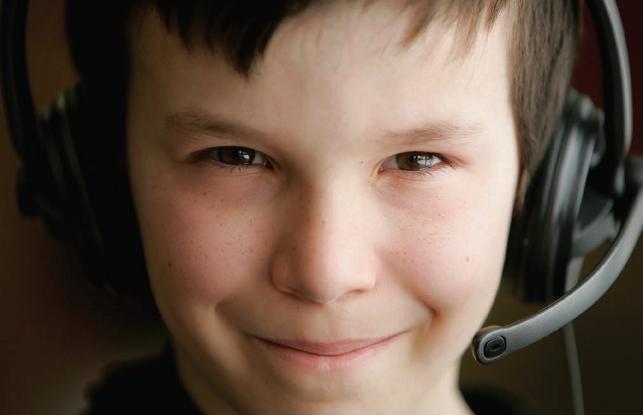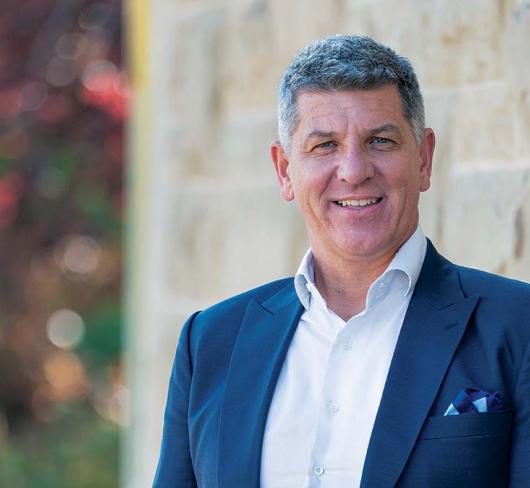
Portable Radio: Podcasting from the Portables
In the summer of 2006 Nathan Toft downloaded Apple’siTunes software, curious about the 99-cent songs hehad heard about. This move introduced him to the exciting world of podcasting. He quickly got Janehooked and the two teachers, who are both joggers,loaded up their iPods with a variety of shows theydownloaded from the Internet. This was the start oftheir pod-casting adventure.
We have been team teaching Junior grades for the past five years. We share a similar interest in technology and its application in the classroom. This year, we are each teaching a 5/6 class, and we plan our units together and combine our classes whenever possible. We both maintain class websites and blogs and collaborate on the portableradio.ca website. We also act as “computer contact teachers” in our school, assisting staff with all things technological. Being teachers as well as techies, we surfed the Net and found two podcasts in particular, Room 208 and Radio WillowWeb, that we were eager to introduce to our students.
What is Portable Radio?
Portable Radio (portableradio.edublogs.org) is a podcast made by our two grade 5/6 classes at A. Lorne Cassidy Elementary School, just outside Ottawa. We named the show Portable Radiobecause our classes are housed in portable classrooms and podcasts are played on portable MP3 players. Of course, podcasts like ours can also be listened to directly on any computer with Internet access.
Our classes produce a podcast about every two weeks. Each podcast is about 15 minutes long and showcases both what’s going on in class and what our students are interested in. It’s like having our own variety show that gives our students the opportunity to interview people, make radio dramas, read their stories, and provide audio highlights of our field trips. The shows are a way of giving our families and friends a window into our classrooms. Grandparents, uncles, aunts, and cousins can listen to us anywhere in the world. But not only friends and family can visit Portable Radio.
Through our podcast we have made contact with children and classes in other parts of Canada, the United States, England, Wales, South Africa, New Zealand, and Australia. Our students have come to realize that they are an integral part of a global community of learners.
Our first season
Listening to early episodes from our first season has reminded us how far we have come. It was a season of trial and error. We experimented with variety of microphone setups only to discover that there is a great deal of technique involved not only in speaking into a microphone but in holding it as well. Students tended to fidget with the mikes, causing lots of noise in the recording. We eventually discovered that it was easier to have students use voice recorders, a device that resembles a cellphone and is often used to take dictation or record lectures. Our students found it much easier to work with these devices and, as an added bonus, it freed them from their computers. They could now record themselves in the hallway, on field trips, in the gym for an assembly, or wherever they happened to be.
While we were figuring out the ins and outs of classroom podcasting we were also working on a book for Scholastic on the topic of podcasting, which was to be part of the company’s “Moving Up with Literacy Place” series and used as a grade 4 guided-reading text. As neither of us had written a book before, this was another learning experience. The book, Our Class Podcast, was published in early 2008 and we are thrilled with the results. You can find ordering information by clicking on “Our Book” at portableradio.edublogs.org.
Our second season
Season two of Portable Radio has already been marked by a number of highlights and accomplishments.
This year, we decided to add a mini-podcast called “Portable Radio Point of View.” The idea is to take a current events story that is relevant to our students and is being covered by the local media. The students then research, summarize, and express their opinion of the story. For example, a few of our students did a piece about Winnipeg’s claim that it had the world’s longest skateway. Our students, being from Ottawa, disagreed; they researched the facts and gave their opinions.
To make this experience even more meaningful, we simulated a news-gathering environment and put the students on a very tight deadline: the story had to be scripted, recorded, edited, and uploaded to the Internet within one or two days.
When our “Point of View” is completed, we email local media outlets that we think might be interested in airing it. We have been fortunate to have had four of our episodes aired on CBC Radio’s OttawaMorning. Plans are underway for a reporter from their show to visit us. We’ve also been invited for a tour of the CBC studios.
Convinced that podcasting was something more teachers should try, we sent in a proposal to the Ministry of Education’s “Teacher Learning and Leadership Program.” We plan to work with a group of teachers and guide them in developing their own classroom podcasts. It is gratifying to hear that our proposal has been accepted.
Portable Radio has been quite an adventure for us and our students. We are amazed by the fact that we have had visits from over 430 cities in 44 countries. Our students’ voices must be really loud for them to be heard by so many places around the world!
